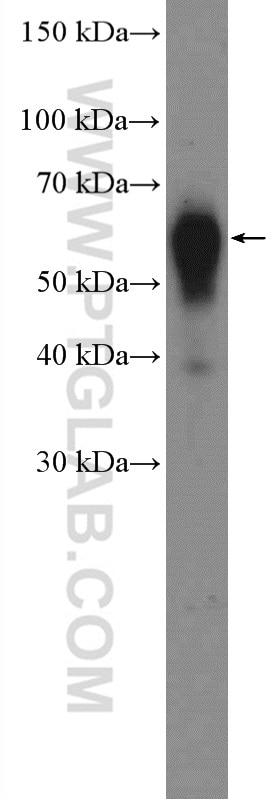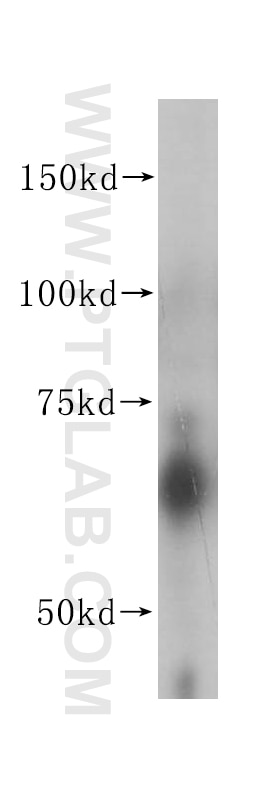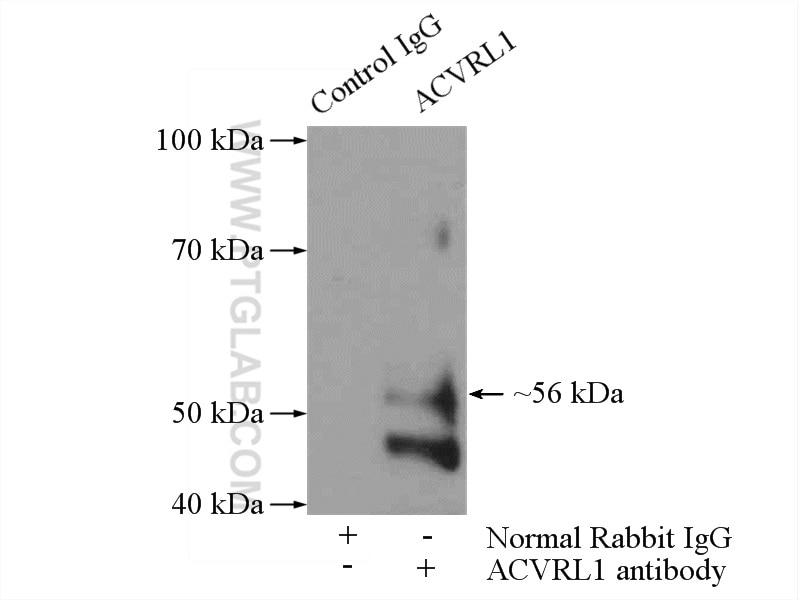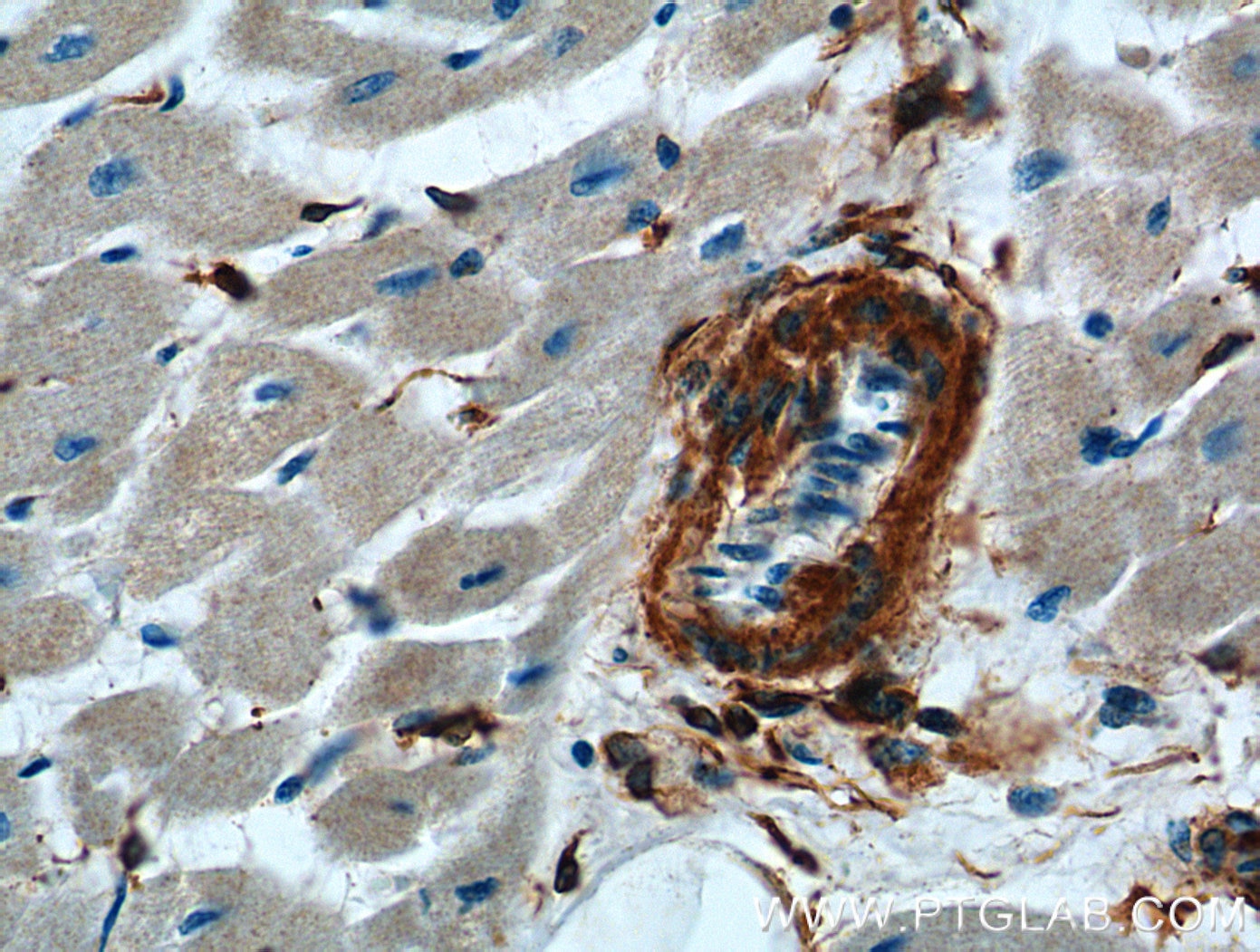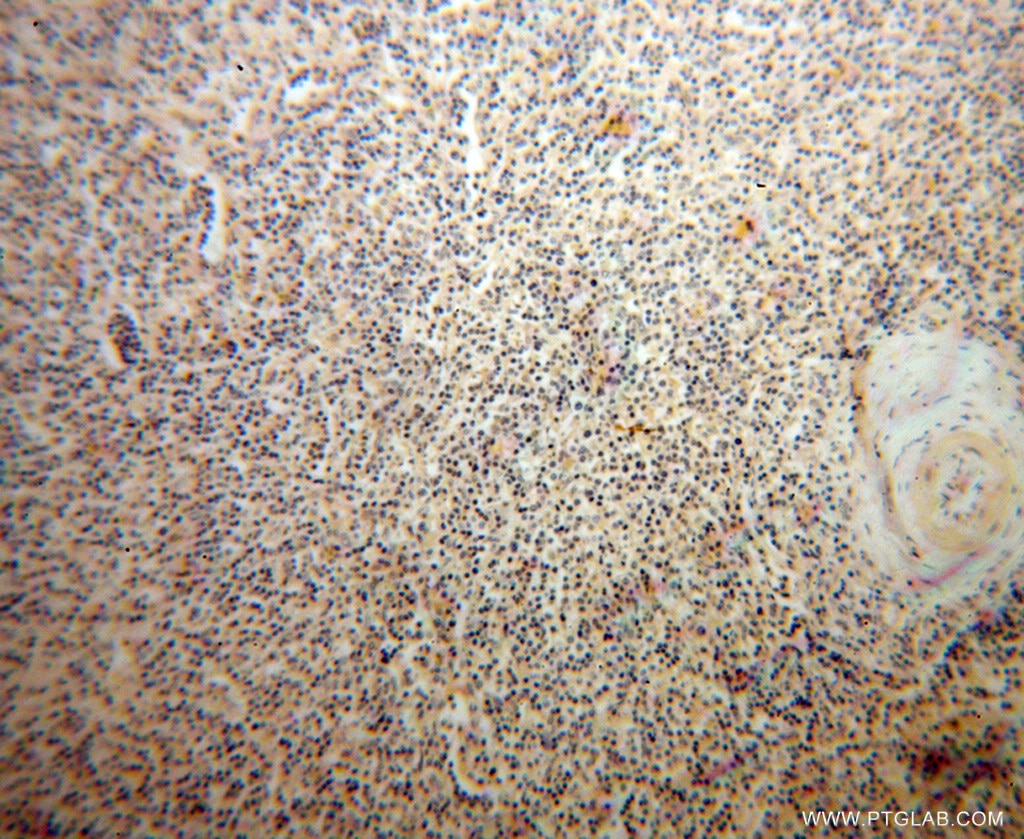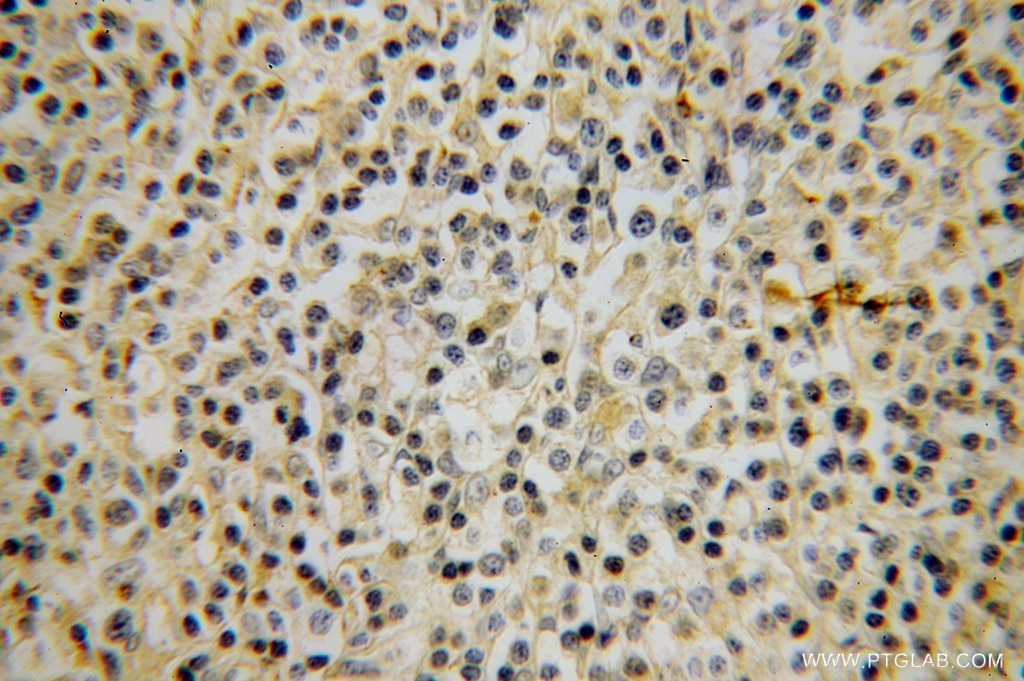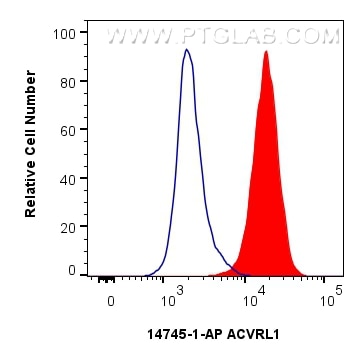Anticorps Polyclonal de lapin anti-ACVRL1
ACVRL1 Polyclonal Antibody for WB, IHC, FC (Intra), IP, ELISA
Hôte / Isotype
Lapin / IgG
Réactivité testée
Humain et plus (2)
Applications
WB, IHC, IF, FC (Intra), IP, ELISA
Conjugaison
Non conjugué
N° de cat : 14745-1-AP
Synonymes
Galerie de données de validation
Applications testées
| Résultats positifs en WB | tissu placentaire humain, |
| Résultats positifs en IP | cellules Jurkat |
| Résultats positifs en IHC | tissu cardiaque humain, tissu de lymphome humain il est suggéré de démasquer l'antigène avec un tampon de TE buffer pH 9.0; (*) À défaut, 'le démasquage de l'antigène peut être 'effectué avec un tampon citrate pH 6,0. |
| Résultats positifs en FC (Intra) | cellules Jurkat, |
Dilution recommandée
| Application | Dilution |
|---|---|
| Western Blot (WB) | WB : 1:500-1:1000 |
| Immunoprécipitation (IP) | IP : 0.5-4.0 ug for 1.0-3.0 mg of total protein lysate |
| Immunohistochimie (IHC) | IHC : 1:50-1:500 |
| Flow Cytometry (FC) (INTRA) | FC (INTRA) : 0.25 ug per 10^6 cells in a 100 µl suspension |
| It is recommended that this reagent should be titrated in each testing system to obtain optimal results. | |
| Sample-dependent, check data in validation data gallery | |
Applications publiées
| WB | See 6 publications below |
| IHC | See 2 publications below |
| IF | See 1 publications below |
| IP | See 1 publications below |
Informations sur le produit
14745-1-AP cible ACVRL1 dans les applications de WB, IHC, IF, FC (Intra), IP, ELISA et montre une réactivité avec des échantillons Humain
| Réactivité | Humain |
| Réactivité citée | rat, Humain, souris |
| Hôte / Isotype | Lapin / IgG |
| Clonalité | Polyclonal |
| Type | Anticorps |
| Immunogène | ACVRL1 Protéine recombinante Ag6449 |
| Nom complet | activin A receptor type II-like 1 |
| Masse moléculaire calculée | 56 kDa |
| Poids moléculaire observé | 63 kDa |
| Numéro d’acquisition GenBank | BC042637 |
| Symbole du gène | ACVRL1 |
| Identification du gène (NCBI) | 94 |
| Conjugaison | Non conjugué |
| Forme | Liquide |
| Méthode de purification | Purification par affinité contre l'antigène |
| Tampon de stockage | PBS with 0.02% sodium azide and 50% glycerol |
| Conditions de stockage | Stocker à -20°C. Stable pendant un an après l'expédition. L'aliquotage n'est pas nécessaire pour le stockage à -20oC Les 20ul contiennent 0,1% de BSA. |
Informations générales
ACVRL1 (also known as ALK1) is a type I cell-surface receptor for the TGF-beta superfamily of ligands. It shares with other type I receptors a high degree of similarity in serine-threonine kinase subdomains, a glycine- and serine-rich region (called the GS domain) preceding the kinase domain, and a short C-terminal tail. ACVRL1 is highly expressed in endothelial cells and has a critical role in the control of blood vessel development and repair (PMID: 8640225). Mutations in the ACVRL1 gene are associated with hemorrhagic telangiectasia type 2.
Protocole
| Product Specific Protocols | |
|---|---|
| WB protocol for ACVRL1 antibody 14745-1-AP | Download protocol |
| IHC protocol for ACVRL1 antibody 14745-1-AP | Download protocol |
| IP protocol for ACVRL1 antibody 14745-1-AP | Download protocol |
| Standard Protocols | |
|---|---|
| Click here to view our Standard Protocols |
Publications
| Species | Application | Title |
|---|---|---|
Mol Cell OTULIN allies with LUBAC to govern angiogenesis by editing ALK1 linear polyubiquitin. | ||
Nat Commun Clonal hematopoiesis with JAK2V617F promotes pulmonary hypertension with ALK1 upregulation in lung neutrophils. | ||
J Mol Cell Cardiol BMP9 attenuates occurrence of venous malformation by maintaining endothelial quiescence and strengthening vessel walls via SMAD1/5/ID1/α-SMA pathway. | ||
Cell Biol Int CHRDL2 promotes osteosarcoma cell proliferation and metastasis through the BMP-9/ PI3K/ AKT pathway. | ||
J Thorac Dis Pulmonary inflammatory myofibroblastic tumor versus IgG4-related inflammatory pseudotumor: differential diagnosis based on a case series. | ||
Biosci Biotechnol Biochem BMP9 functions as a negative regulator in the myogenic differentiation of primary mouse myoblasts |
